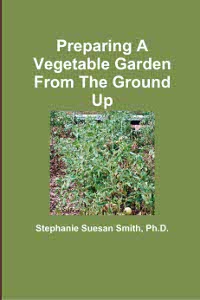Magnolia Trees are intricately linked to visions of the South. The movie Steel Magnolias is an excellent example of this linkage. Magnolia trees are usually trimmed into the familiar Christmas tree shape, but they grow straight and true when left alone. They can grow as tall as pines under ideal conditions.
Which Magnolia? The major Magnolia found in the South is the Southern Magnolia, Magnolia grandiflora. This tree grows throughout the South in creek and river bottoms, swamps, and around other hardwood trees. It is an evergreen tree, shedding old leaves in the spring and seed pods in late summer. You must plant it in a place where the old leaves, blossoms, and seed pods won’t make too much of a mess, or be very diligent about picking up the litter from the tree. However, the large, glossy leaves, beautiful tree, and wonderful smelling white blossoms make up for any trouble the tree litter might cause.
Where they grow. Magnolia trees grow best in loose, acidic soils. They are tolerate of high moisture levels and can be planted in areas prone to wet/dry fluctuations in soil moisture. They do not like black, clay soils.. Sometimes a tree will grow for several years, then decline and die when the roots hit the compacted clay substrate. Magnolia trees will grow in partial shade, but will not grow as fast and will have fewer blooms than a tree planted in full sun.
How to make a Magnolia tree Magnolia trees are propagated from cuttings taken off of older trees or from seed. The trees grown from cuttings grow much better than the trees grown from seed. The seeds are hard to germinate, and the cuttings are hard to root. It is best to buy a tree from a nursery instead of trying to grow one from seed or a cutting yourself.
Planting The best time to plant Magnolia trees varies with the climate. It can be as early as is October and November or as late as February. You should dig a hole twice as wide as the root ball or container in which the plant is growing, and as deep as the root ball. Be certain the top of the root ball is level with the soil surface, then backfill with the native soil you just dug out of your hole. Water thoroughly to settle the soil. Then apply three to five inches of mulch on the soil surface to conserve moisture and prevent weeds.
Watering The tree will need to be watered three times a week, with one inch of water a time, the first two weeks. After that, water the tree one inch a week once a week. Too much water will kill your tree faster than too little water. Do not fertilize at planting or in the winter. Wait until spring arrives and the tree has new growth before fertilizing.
Fertilizing For the first three years, fertilize lightly in March, May, July, and September. By the fourth growing season, you can reduce that to March and September for the rest of the life of the tree. You will need to test the soil around the tree to know what nutrients to feed your plant. It will definitely need Nitrogen, but may not need Phosphorus or Potassium.
Pruning Most people shape their Magnolia tree into a pyramidal shape. You should leave the lower branches on the Magnolia, so that the canopy extends to the ground and hides the tree litter. You will need to selectively prune the side branches in December to maintain the pyramidal shape. If you chose not to trim the tree, it will grow straight and can reach 80 to 100 feet in height. It will still have the foliage and blossoms, but there will not be as many of them as if it were pruned into the pyramidal shape.
Buying Magnolias There are different cultivars of Magnolia trees. Some grow only 20 feet tall, some grow 80 feet tall. You can do a little research and find the best cultivar for the site you have chosen for your tree. When planting, make sure you allow for the mature size of the tree and avoid overhead lines, sidewalks, and other plants. The tree will shade out most plants that are under the canopy, so keep that in mind.
 For more help gardening, buy my book, Preparing A Vegetable Garden From The Ground Up
For more help gardening, buy my book, Preparing A Vegetable Garden From The Ground Up
Available in print or ebook from Amazon.com or other retailers, this book walks you from choosing the site of your garden all the way through what to do after the harvest. Buy a copy for yourself or a friend today!



Magnolia trees are very beautiful. I would love to have a few in the backyard